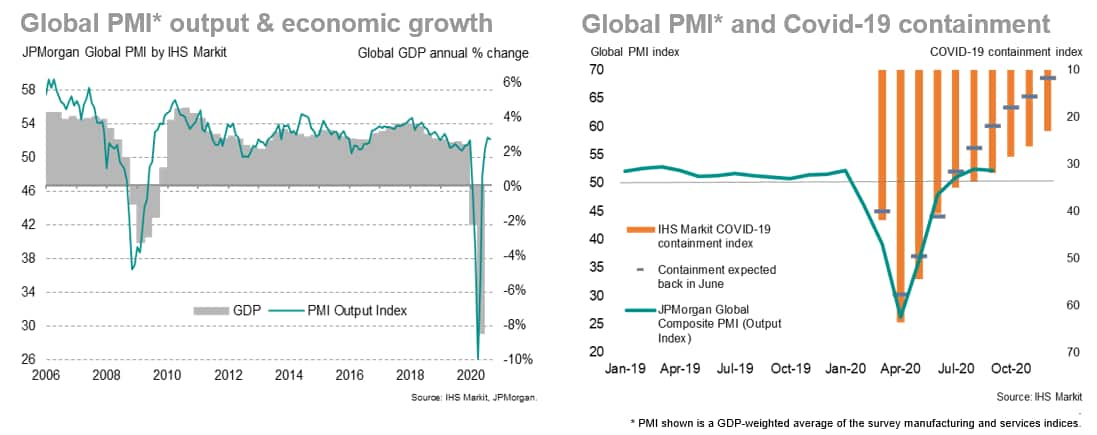Global growth slows in September as COVID-19 numbers rise new
The following is an extract from IHS Markit's monthly PMI overview presentation. For the full report please click on the link at the bottom of the article.
The worldwide PMI surveys indicated a further month of solid economic growth in September, with rising demand generating a return of jobs growth globally. However, the overall pace of output growth edged lower. The headline JPMorgan Global PMI™ (compiled by IHS Markit) fell for the first time in five months, dipping from 52.4 in August to 52.1. Business sentiment about the outlook meanwhile slipped lower for a second month amid growing worries of further waves of coronavirus disease 2019 (COVID-19) infections.
September not only saw rising coronavirus infection numbers in many countries, but also saw containment measures remain considerably tighter than had previously been expected as governments sought to reduce the spread of the virus. Containment even tightened in some countries, which consequently saw economic activity fall back into decline. However, in some cases, business growth slowed due to capacity constraints and supply chain delays.
Chris Williamson, Chief Business Economist, IHS
Markit
Tel: +44 207 260 2329
chris.williamson@ihsmarkit.com
© 2020, IHS Markit Inc. All rights reserved. Reproduction in whole or in part without permission is prohibited.
Purchasing Managers' Index™ (PMI™) data are compiled by IHS Markit for more than 40 economies worldwide. The monthly data are derived from surveys of senior executives at private sector companies, and are available only via subscription. The PMI dataset features a headline number, which indicates the overall health of an economy, and sub-indices, which provide insights into other key economic drivers such as GDP, inflation, exports, capacity utilization, employment and inventories. The PMI data are used by financial and corporate professionals to better understand where economies and markets are headed, and to uncover opportunities.
This article was published by S&P Global Market Intelligence and not by S&P Global Ratings, which is a separately managed division of S&P Global.

